I have a 1994 Ducato Hymer Camp which is fitted with a Truma C3400 boiler. It works well once the fire has started, but the problem that I had-and stil have- is that a year or so ago, I had problems in getting the hot water to flow. After mush blowing, sucking, taking the feed pipe off., it worked fine, but after a few days of not being used, I use to have to repeat the process again,. Eventually, I espied blue gunge in the filler pipe the tank side of the dump valve. I took the whole unit out and cleaned it, flushed all the system and it worked fine. The automatic dump valve broke, so I replaced it with a manual one. Since this July, it has been playing up again, so I sought advice from various people in the business, and they suggested that a one-way valve would stop the water from back flowing if not used or that there was air in the system. I fitted a valve to the 'in' side of the feed pipe before the dump valve and it seemed to work. However, it started to run slower, so that is when I decided to investigate further. There are times when I look out of my house window and see water dripping from the freshwater tank overflow. This, I was informed, could be due to the expansion of the water in hot weather, even though the tank may only be under the full mark. Being coach-built, all the piping disappears under the flooring to re-emerge in the wardrobe connecting to what I have bee told are manifolds. I also disconnected a pipe that was connected to the hot water output and this had a one-way valve fitted. When I put the piping back together and turned the hot tap on, water was coming out of a pipe by the rear o/s wheel! I then tracked back and it was the pipe that had the valve in. I turned the valve around and this stopped the leaking water. Under the wardrobe floor there was another pipe that disappeared through the floor with a some sort of plunger type piece of plastic with an 'O' ring on it. This too leaked water from another pipe that I didn't know I had! Having stopped all the leaking water, I now find that the hot water-especially-flows slower than before I fitted the non-return valve, but it doesn't need all the sucking and blowing to get it to work after a few days of standing, but does struggle a little to get flowing. I have mailed Hymer who do not have any plans of the pipe layout or what the problem could be. But they did send me a wiring diagram of the vehicle?! So, to end this tome, I am going to attach some photos for your ocular participation as to where all the pipes go and what are the manifolds for? I know that I need three hot feeds and four cold feeds (taps and toilet flush) Thanking you for any tips and this could form a party game over this Christmas Period -Name that Pipe!

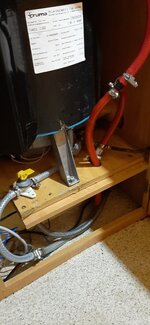
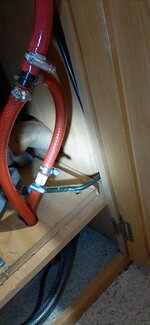
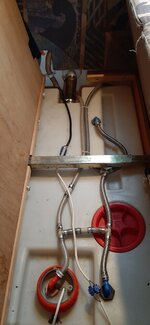
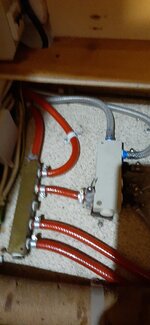

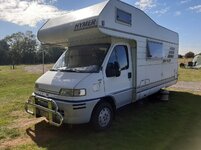









 to FUN
to FUN